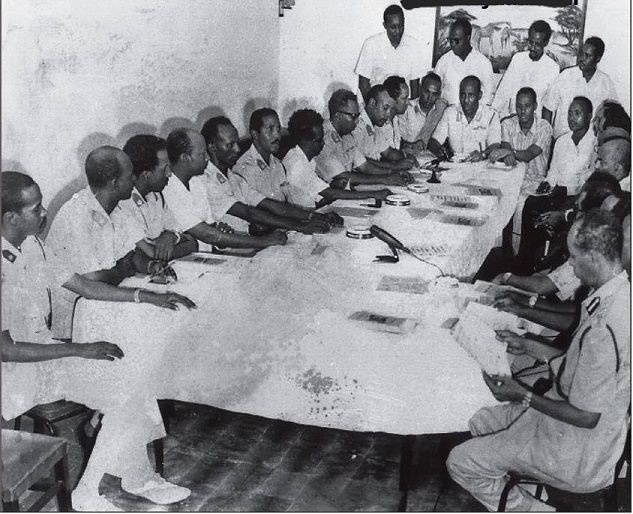
Today is the anniversary of the October 21, 1969 revolution that put the armed forces in control of Somalia. It all started with a bloodless coup after the assassination of the first democratically elected president, Abdirashi Ali Sharmarke, on October 15, 1969.

President Sharmarke was elected in 1967 amid controversy over an election marred by fraud, corruption and clan feuds. He once survived a grenade attack on his life, but the second time he was shot at close range by a policeman from the same clan in Las-Anod.
In the months following the military coup, the new regime adopted a socialist system and allied itself with the Soviet Union. During the first 7 years, the regime focused on modernizing a country still engulfed by the minimalist colonial economic system.
The state took control of the economy. Banks were nationalized and state-owned industry and large cooperative farms were established. Programs to increase the output of agriculture and fishing were developed. With unprecedented political stability, the government embarked on ambitious projects.
The main project was investment in human capital and transform the Somali society. With a Rural Development Campaign, young volunteer teachers, instructors and nurses have been sent en masse to remote areas to teach literacy, train and support herders, farmers and nomads.
With the establishment of a welfare state, education from grade one to university was made free of charge. A dress code that erase ostentation of wealth was enforced in schools. Healthcare was also free and health facilities, staffed with Soviet-trained Somali practitioners, were built in every major towns.
The social revolution gave equality to men and women. Women were encouraged to dream big and contribute to their society beyond their traditional role. We saw the first high-ranking female officers in the army and police, doctors, pilots, scientists, etc.

Previously despised clans have been rehabilitated and minorities have had access to the same opportunities as the major clans that have dominated Somali political and economic life since independence.
The revolutionary regime carried out a secularization and a somalization of Somali way of life that minimize the role of the clerics and the clan system in the society. It also attempted to create a unified identity around one dialect and the acceptance of the diverse regional subcultures.
However, the revolutionary system was put to a severe test between 1974 and 1975 with the Dabadheer (“long-tail”) drought which devastated a vast region stretching from Togdheer to Galgadud. President Mohamed Siyad Barre declared a state of emergency and funneled the entire budget for social programs to the relief of the drought-affected population.
In 1976, Somalia was at the height of its glory. The Somali model of development attracted many admirers on the African continent. Somalia was solicited and responded by helping in African liberation movements from Eritrea to South Africa. Somali military instructors trained Mozambique and Burundi’s security forces and other nascent states.

Today, most Somali leaders were groomed at state expense during these two decades. Easy access to government benefits continued until President Siad Barre was ousted from power on January 26, 1991 by disgruntled politicians backed by unruly clan militias.
President Hassan Sheikh Mahamud, who had often called Siad Barre a dictator, had however admitted that he himself, as a poor orphan child, had benefited from the social programs of the revolution. This admission has not prevented him, and his increasingly hated entourage, from continuing on a diametrically opposed path.
After the decades-long civil war that destroyed and divided the country, most young Somali adults grew up in exile or only knew a chaotic Somalia until this current foreign-controlled and unstable administration.
With today’s challenges, more than ever Somalis look forward to a different kind of governance where the needs of the people come first. It is therefore no wonder that many Somalis talk about what we have lost and dream of a new revolution to reset the society.
